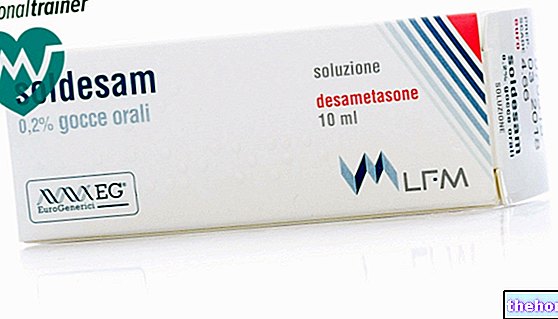Active ingredients: Ursodeoxycholic acid
URSOBIL 150 mg hard capsules
URSOBIL 250 mg hard capsules
The package leaflets of Ursobil are available for the packs: - URSOBIL 150 mg hard capsules, URSOBIL 250 mg hard capsules
- URSOBIL 300 mg tablets
- URSOBIL® SYRUP DROPS
Why is Ursobil used? What is it for?
URSOBIL is a preparation based on bile acids naturally present in the organism, which is able to solubilize cholesterol in the bile.
This medicine is used to treat changes in the production of bile by the liver and to improve the solubility of cholesterol, both to prevent stones from forming and to make them easier to dissolve. This medicine is not effective against all types of stones, but only against those not visible on X-rays (radiolucent); in particular, cholesterol stones in the gallbladder (functioning gallbladder) and stones in the bile duct.
It is also used to treat digestive problems due to gallbladder malfunction (biliary dyspepsia).
Contraindications When Ursobil should not be used
Do not take URSOBIL
- if you are allergic (hypersensitive) to ursodeoxycholic acid, bile acids or any of the ingredients of this medicine (listed in section 6);
- if you have acute "inflammation of the gallbladder (gallbladder) or biliary tract;
- if you have a blockage of the biliary tract (occlusion of the common or cystic bile duct);
- if you frequently suffer from pain in the upper abdomen (biliary colic);
- if you have calcified stones visible on X-rays;
- if you suffer from impaired contractility of the gallbladder.
Precautions for use What you need to know before taking Ursobil
Talk to your doctor or pharmacist before taking this medicine.
Treatment with this medicine should be under close medical supervision.
Before starting long-term therapy, check liver function (control of transaminases and alkaline phosphatase). During the first 3 months of treatment with this medicine your doctor will check your liver function parameters every 4 weeks. After this period, every 3 months. This allows you to assess your response to therapy (for primary biliary cirrhosis) and to diagnose potential liver damage.
In the treatment of gallstones of the biliary tract you will have to visualize the gallbladder (oral cholecystography) by ultrasound, 6-10 months after the start of the treatment, to evaluate the improvement of your condition.
If you have problems with diarrhea, please contact your doctor, who may decide to reduce the dose or discontinue therapy.
This medicine is not suitable for the treatment of all types of gallstones; those that have a higher likelihood of dissolution are those not visible on x-rays (radiolucent) and small in functioning gallbladder.
Interactions Which drugs or foods can modify the effect of Ursobil
Tell your doctor or pharmacist if you are taking, have recently taken or might take any other medicines.
Avoid taking URSOBIL at the same time as the following medicines as they may have decreased effectiveness:
- sequestrants of bile acids, used to lower cholesterol levels such as cholestyramine and colestipol or antacids containing aluminum hydroxide and / or smectite (aluminum oxide), because they reduce their effectiveness. Should the use of such medicines be necessary, must be taken 2 hours before or after taking URSOBIL;
- cyclosporine, a medicine that reduces the activity of the immune system. In this case the doctor will have to check the concentration in the blood and adjust the dose;
- ciprofloxacin and dapsone, antibiotics used against infections;
- nitrendipine, a medicine used to lower blood pressure, in this case an increase in the dose may be necessary;
- estrogen and blood cholesterol-lowering agents such as clofibrate which can promote the formation of gallbladder stones;
- medicines that increase biliary clearance of cholesterol (hormonal contraceptives, some lipid-lowering drugs). Women taking URSOBIL to dissolve cholesterol stones should use an effective non-hormonal method of contraception, as hormonal contraceptives can increase biliary stones (see paragraphs "Interactions" and "Pregnancy and breastfeeding")
- Rosuvastatin (medicine used to treat hypercholesterolemia)
- Budesonide (active ingredient used for the treatment of inflammatory manifestations, especially of allergic origin.
Warnings It is important to know that:
Pregnancy and breastfeeding
If you are pregnant or breast-feeding, think you may be pregnant or are planning to have a baby, ask your doctor or pharmacist for advice before taking this medicine.
Do not take this medicine during pregnancy unless it is absolutely necessary. Before starting treatment, make sure you are not pregnant.
If you are of childbearing age, you can only start treatment if you are using a safe method of contraception (non-hormonal or low-estrogen oral contraceptives). If you are being treated for stone dissolution, use an effective non-hormonal contraceptive, as hormonal oral contraceptives can increase the formation of gallbladder stones.
Levels of ursodeoxycholic acid are very low and undesirable effects in breastfed infants are unlikely to be expected.
Driving and using machines
Ursodeoxycholic acid has no or negligible influence on the ability to drive and use machines.
URSOBIL 150 mg hard capsules contain lactose
This medicine contains lactose, a type of sugar. If you have been told by your doctor that you have "intolerance to some sugars, contact your doctor before taking this medicinal product.
Dose, Method and Time of Administration How to use Ursobil: Posology
Always take this medicine exactly as your doctor or pharmacist has told you. If in doubt, consult your doctor or pharmacist.
Your doctor will adjust the dosage according to your clinical condition and your tolerability towards the medicine.
Treatment of gallstones: to prevent the formation of stones the recommended daily dose is between 5-10 mg / kg (300 and 600 mg) per day, in 2-3 administrations, for prolonged treatment. Take this medicine with or after meals. To maintain the conditions suitable for the dissolution of stones already present, the duration of treatment must be at least 4-6 months, which can increase up to 12.
Treatment of dyspepsia and maintenance therapy: the recommended dose is 300 mg per day, also divided into 2-3 administrations.
If you forget to take URSOBIL
Do not take a double dose to make up for a forgotten dose. Take the next dose at the appointed time.
If you have any further questions on the use of this medicine, ask your doctor or pharmacist.
Overdose What to do if you have taken too much Ursobil
In case of overdose, diarrhea may occur. In general, other symptoms of overdose are unlikely as the absorption of ursodeoxycholic acid decreases with increasing dose and is therefore more excreted in the faeces.
Treatment of overdose involves the reintegration of fluids and mineral salts. In case of intoxication, administer cholestyramine, as it is capable of chelating bile acids.
In case of accidental ingestion of an excessive dose of this medicine, notify your doctor immediately or go to the nearest hospital.
Side Effects What are the side effects of Ursobil
Like all medicines, this medicine can cause side effects, although not everybody gets them.
The following side effects may occur:
Common (may affect up to 1 in 10 people)
- pasty stools or diarrhea.
Rare (may affect up to 1 in 1,000 people)
- bowel irregularity, which generally disappears with continued treatment.
Very rare (may affect up to 1 in 10,000 people)
- severe pain in the upper right abdomen;
- calcification of gallstones;
- severe liver problems (liver cirrhosis), which partially regresses on discontinuation of therapy;
- urticaria.
Reporting of side effects
If you get any side effects, talk to your doctor or pharmacist. This includes any possible side effects not listed in this leaflet. You can also report side effects directly via the national reporting system on the website: http://www.agenziafarmaco.gov.it/it/responsabili. By reporting side effects you can help provide more information on the safety of this medicine.
Long-term, high-dose therapy with ursodeoxycholic acid (28-30 mg / kg / day) in patients with primary sclerosing cholangitis (off-label use) has been associated with higher rates of serious adverse events.
Expiry and Retention
Keep this medicine out of the sight and reach of children.
Do not use this medicine after the expiry date which is stated on the package after "Expiry".
The expiry date refers to the last day of that month and to the product in intact packaging, correctly stored.
This medicine does not require any special storage conditions.
Do not throw any medicines via wastewater or household waste. Ask your pharmacist how to throw away medicines you no longer use. This will help protect the environment.
Deadline "> Other information
What URSOBIL contains
URSOBIL 150 mg hard capsules
- The active ingredient is ursodeoxycholic acid. Each tablet contains 150 mg of ursodeoxycholic acid.
- The other ingredients are: lactose, magnesium stearate, colloidal silica, polyvinylpyrrolidone, gelatin, titanium dioxide (E171), yellow iron oxide (E172).
URSOBIL 250 mg hard capsules
- The active ingredient is ursodeoxycholic acid. Each tablet contains 300 mg of ursodeoxycholic acid.
- The other ingredients are: magnesium stearate, colloidal silica, polyvinylpyrrolidone, gelatin, titanium dioxide (E171), yellow iron oxide (E172).
What URSOBIL looks like and contents of the pack
Box of 20 and 40 hard capsules of 150 mg. Box of 20 and 30 hard capsules of 250 mg.
Source Package Leaflet: AIFA (Italian Medicines Agency). Content published in January 2016. The information present may not be up-to-date.
To have access to the most up-to-date version, it is advisable to access the AIFA (Italian Medicines Agency) website. Disclaimer and useful information.
01.0 NAME OF THE MEDICINAL PRODUCT -
URSOBIL
02.0 QUALITATIVE AND QUANTITATIVE COMPOSITION -
Each 150 mg hard capsule contains:
Active principle:
- Ursodeoxycholic acid 150 mg
Excipients: Lactose
Each 250 mg hard capsule contains:
Active principle:
-Usodeoxycholic acid 250 mg
One 300 mg tablet contains:
Active principle
- Ursodeoxycholic acid 300 mg
Excipients: lactose
For the full list of excipients see section 6.1
03.0 PHARMACEUTICAL FORM -
- Hard capsules of 150 mg
- Hard capsules of 250 mg
- 300 mg tablets
04.0 CLINICAL INFORMATION -
04.1 Therapeutic indications -
Qualitative or quantitative alterations of the biligenetic function, including forms with bile supersaturated in cholesterol, to oppose the formation of cholesterol stones or to create suitable conditions for dissolution if radiolucent stones are already present: in particular gallstones in functioning gallbladder and stones in the choledochus residual or recurrent after biliary tract operations.
Biliary dyspepsia.
04.2 Posology and method of administration -
In prolonged use: to reduce the lithogenic characteristics of the bile, the average daily dosage is 5-10 mg / kg in 2-3 administrations.
To maintain the conditions suitable for the dissolution of the stones already present, the duration of the treatment must be at least 4-6 months, even up to 12.
In dyspeptic syndromes and maintenance therapy, doses of 300 mg / day, divided into 2-3 administrations, are generally sufficient.
Doses can be changed according to the doctor's judgment; in particular, the excellent tolerability of the preparation allows to adopt even higher doses.
Intakes should preferably be made during or after meals.
04.3 Contraindications -
Ursodeoxycholic acid should not be used in patients with:
• Acute inflammation of the gallbladder or biliary tract
• biliary tract occlusion (common or cystic bile duct occlusion)
• frequent biliary colic
• radio-opaque calcified stones
• impaired contractility of the gallbladder gallbladder
• Hypersensitivity to the active substance, to bile acids, or to any of the excipients.
04.4 Special warnings and appropriate precautions for use -
Ursobil must be taken under medical supervision.
During the first 3 months of treatment, liver function parameters AST (SGOT), ALT (SGPT) and g-GT should be monitored by your physician every 4 weeks and then every 3 months thereafter. In addition to allowing the identification of responsive and untreated patients for primary biliary cirrhosis, such monitoring should also facilitate the early diagnosis of potential hepatic deterioration, particularly in patients with advanced primary biliary cirrhosis.
When used for the dissolution of cholesterol stones:
In order to prove the therapeutic improvement and the temporary identification of calcification of the stones, depending on their size, the gallbladder must be visualized (oral cholecystography) with an overview and the occluded pathways in orthostatic and supine positions (control by ultrasound) 6-10 months after the start of treatment.
If visualization of the gallbladder with X-ray images is not possible, or in the case of calcified stones, impaired contractility of the gallbladder or frequent episodes of biliary colic, Ursobil should not be used.
Women taking URSOBIL for dissolving cholesterol stones should use an effective non-hormonal method of contraception, as hormonal contraceptives may increase biliary lithiasis (see sections 4.5 and 4.6).
When used for the treatment of advanced stage primary biliary cirrhosis:
In very rare cases, decompensation of liver cirrhosis has been observed, which partially regressed after discontinuation of treatment.
In patients with Primary Biliary Cirrhosis, in rare cases the clinical symptoms may worsen at the start of treatment, for example, itching may increase. In this case the dose of Ursobil should be reduced to one capsule of 250 mg per day and then gradually increased. as described in section 4.2.
In case of diarrhea, the dose should be reduced and in case of persistent diarrhea, the treatment should be stopped.
A possible check of the biliary composition aimed at verifying the occurred desaturation in cholesterol represents an important forecasting element for a favorable outcome of the treatment.
If long-term dissolving treatments are initiated, a preliminary check of the transaminases and alkaline phosphatase should be carried out.
Important information about some of the ingredients:
URSOBIL 150 mg capsule and URSOBIL 300 mg tablet contain lactose: patients with rare hereditary problems of galactose intolerance, the Lapp lactase deficiency, or glucose-galactose malabsorption should not take this medicine.
04.5 Interactions with other medicinal products and other forms of interaction -
Ursobil should not be co-administered with cholestyramine, colestipol or antacids containing aluminum hydroxide and / or smectite (aluminum oxide), as they bind ursodeoxycholic acid in the intestine and inhibit its absorption and efficacy. If it is necessary to use these substances, they must be taken 2 hours before or after taking Ursobil.
Ursobil may affect the intestinal absorption of cyclosporine. In patients treated with cyclosporine the blood concentration should be monitored by their doctor and the dose of cyclosporine adjusted if necessary.
In isolated cases ursodeoxycholic acid may reduce the absorption of ciprofloxacin.
In clinical trials with healthy volunteers, co-administration of ursodeoxycholic acid (500 mg per day) and rosuvastatin (200 mg per day) resulted in a slight increase in plasma rosuvastatin levels. The clinical relevance of this interaction to other statins is also unknown.
Ursodeoxycholic acid has been shown to reduce the peak plasma concentrations (Cmax) and the area under the curve (AUC) of the calcium channel blocker nitrendipine in healthy volunteers. Close monitoring of outcome due to concomitant use of nitrendipine and ursodeoxycholic acid is recommended. An increase in the dose of nitrendipine may be necessary. An "interaction with the reduction of" therapeutic effect of dapsone has also been reported. These observations, together with in vitro tests indicate a potential induction of cytochrome P450 3A enzymes by ursodeoxycholic acid. However, the induction was not observed in a well-structured interaction study with budesonide, which is a known substrate of cytochrome. P450 3A.
Estrogens and serum cholesterol-reducing agents such as clofibrate can increase the secretion of hepatic cholesterol and can therefore promote biliary lithiasis, which is a side effect of using ursodeoxycholic acid to dissolve stones.
Avoid association with drugs that increase biliary elimination of cholesterol (estrogen, hormonal contraceptives, some lipid-lowering drugs).
04.6 Pregnancy and breastfeeding -
Animal studies have not shown an "influence of ursodeoxycholic acid on fertility" (see section 5.3). There are no data on the effects of fertility in humans after treatment with ursodeoxycholic acid.
There are no or limited amounts of data on the use of ursodeoxycholic acid in pregnant women.
Animal studies have shown reproductive toxicity during the first phase of gestation (see section 5.3).
URSOBIL should not be used during pregnancy unless clearly necessary. Women of childbearing potential should only be treated if they are using a safe method of contraception: non-hormonal or low-estrogen oral contraceptives are recommended. However, in patients taking URSOBIL for the dissolution of stones, the use of an effective non-hormonal method of contraception is recommended, since hormonal oral contraceptives can increase biliary lithiasis. Before starting treatment, rule out a possible pregnancy.
According to the few documented cases of breastfeeding, ursodeoxycholic acid levels are very low and undesirable effects in breastfed infants are unlikely to be expected.
04.7 Effects on ability to drive and use machines -
Ursodeoxycholic acid has no or negligible influence on the ability to drive and use machines.
04.8 Undesirable effects -
The following convention has been used for the classification of the frequencies of undesirable effects:
Very common (≥ 1/10),
Common (≥ 1/100 ma
Uncommon (≥ 1/1000 but
Rare (≥ 1/10000 ma
Very rare (
Not known (frequency cannot be estimated from the available data)
Gastrointestinal disorders:
In clinical studies, episodes of pasty stools or diarrhea are commonly reported during ursodeoxycholic acid therapy.
Very rarely, severe right upper quadrant abdominal pain has occurred during treatment of primary biliary cirrhosis.
Hepatobiliary disorders:
In very rare cases, calcification of gallstones has occurred during treatment with ursodeoxycholic acid. During the treatment of advanced stage primary biliary cirrhosis, decompensation of liver cirrhosis has been observed very rarely, which partially regressed after discontinuation of treatment.
Skin and subcutaneous tissue disorders:
Very rarely, hives may occur.
The tolerability of the preparation at the recommended doses is generally good.
Irregularities of the alvus have been found only occasionally, which generally disappear with continued treatment.
Reporting of suspected adverse reactions
Reporting of suspected adverse reactions occurring after authorization of the medicinal product is important as it allows continuous monitoring of the benefit / risk balance of the medicinal product. Healthcare professionals are asked to report any suspected adverse reactions via the national reporting system.
04.9 Overdose -
In case of overdose, diarrhea may occur. In general, other symptoms of overdose are unlikely as the absorption of ursodeoxycholic acid decreases with increasing dose and is therefore more excreted in the faeces.
No specific countermeasures are necessary and the consequences of diarrhea must be treated symptomatically with fluid replenishment and electrolyte balance.
There are no known cases of overdose over 4 g per day (this dose was well tolerated). In case of accidental ingestion of Ursodeoxycholic Acid in highly higher doses, it is suggested to implement the normal measures recommended for intoxication pathologies and to administer cholestyramine, as it is capable of chelating bile acids.
Learn more about special patient populations:
Long-term, high-dose therapy with UDCA (28-30 mg / kg / day) in patients with primary sclerosing cholangitis (off-label use) was associated with higher rates of serious adverse events.
05.0 PHARMACOLOGICAL PROPERTIES -
05.1 "Pharmacodynamic properties -
Therapeutic drug category: biliary and hepatic therapy
ATC code: A05AA02
Ursodeoxycholic acid (UDCA) represents the 7b-epimer of Chenodeoxycholic acid and is a bile acid physiologically present in human bile, where it represents a small percentage of total bile acids. UDCA is able to increase the solubilizing capacity of bile against cholesterol in humans by transforming lithogenic bile into non-lithogenic bile.
The mechanisms through which this effect is achieved are many: decrease in the secretion of cholesterol in the bile through a reduction in intestinal absorption and in the hepatic synthesis of cholesterol itself, increase in the overall pool of bile acids favoring the micellar solubilization of cholesterol, formation of a liquid-crystalline mesophase that allows a non-micellar solubilization of cholesterol higher than that obtainable in the equilibrium phase.
The treatment with UDCA therefore determines the formation of unsaturated bile in cholesterol and richer in bile salts suitable for its solubilization, also favoring a regular flow of bile and the emptying of the gallbladder.
05.2 "Pharmacokinetic properties -
After oral administration, Ursodeoxycholic acid is easily absorbed in the intestine, taken up by the liver and excreted in the bile in a predominantly glyco-conjugated form, thus entering the enterohepatic circulation; it is partially metabolized by the intestinal flora and its metabolites are eliminated by fecal route.
05.3 Preclinical safety data -
Ursodeoxycholic acid has the advantages of a reduced formation of lithocolate, considered hepatotoxic in the experimental animal (in humans it engages the sulphation processes), of the absence of increases in serum transaminases, even in the course of long-term treatments in "man.
The experimental toxicity of UDCA is generally very low; the oral LD50 resulted in 10 g / kg in the rat while in the mouse it was respectively 5740 mg / kg for the male and 6000 mg / kg for the female.
Chronic treatments of 28 weeks in rats with doses up to 2000 mg / kg orally did not show any pathological changes in the histopathological parameters studied. Treatments for one year in dogs with doses up to 100 mg / kg orally were also well tolerated without any adverse reactions. In particular, no significant hepatolesive effects, adverse effects on fertility, teratogenic or carcinogenic effects, lesions of the gastric mucosa were highlighted.
06.0 PHARMACEUTICAL INFORMATION -
06.1 Excipients -
Hard capsules of 150 mg
Lactose, magnesium stearate, colloidal silica, polyvinylpyrrolidone, gelatin, titanium dioxide (E171), yellow iron oxide (E172).
Hard capsules of 250 mg
Magnesium stearate, colloidal silica, polyvinylpyrrolidone, gelatin, titanium dioxide (E171), yellow iron oxide (E172).
300 mg tablets
Lactose, corn starch, polyvinylpyrrolidone, talc, magnesium stearate.
06.2 Incompatibility "-
Not relevant.
06.3 Period of validity "-
Hard capsules 150 mg: 5 years
Hard capsules 250 mg: 5 years
300 mg tablets: 3 years
06.4 Special precautions for storage -
None
06.5 Nature of the immediate packaging and contents of the package -
The capsules and tablets are packaged in non-toxic PVC blisters coupled with aluminum; the blisters are placed in a lithographed cardboard box, together with the illustrative leaflet.
Packaging:
Box containing 20 hard capsules of 150 mg
Box containing 20 hard capsules of 250 mg
Box containing 40 hard capsules of 150 mg
Box containing 30 hard capsules of 250 mg
Box containing 20 tablets of 300 mg
Box containing 30 tablets of 300 mg
06.6 Instructions for use and handling -
Not relevant
07.0 HOLDER OF THE "MARKETING AUTHORIZATION" -
ABC FARMACEUTICI S.P.A.
Corso Vittorio Emanuele II, 72 - 10121 Turin
08.0 MARKETING AUTHORIZATION NUMBER -
URSOBIL 20 hard capsules 150 mg - code n.024444034
URSOBIL 20 hard capsules 250 mg - code n.024444059
URSOBIL 40 hard capsules 150 mg - code n.024444097
URSOBIL 30 hard capsules mg 250 - code n.024444109
URSOBIL 20 tablets mg 300 - code no. 024444123
URSOBIL 30 tablets mg 300 - code no. 024444135
09.0 DATE OF FIRST AUTHORIZATION OR RENEWAL OF THE AUTHORIZATION -
Renewal of authorization and printed revision May 2005
10.0 DATE OF REVISION OF THE TEXT -
09 MAY 2016























-nelle-carni-di-maiale.jpg)




